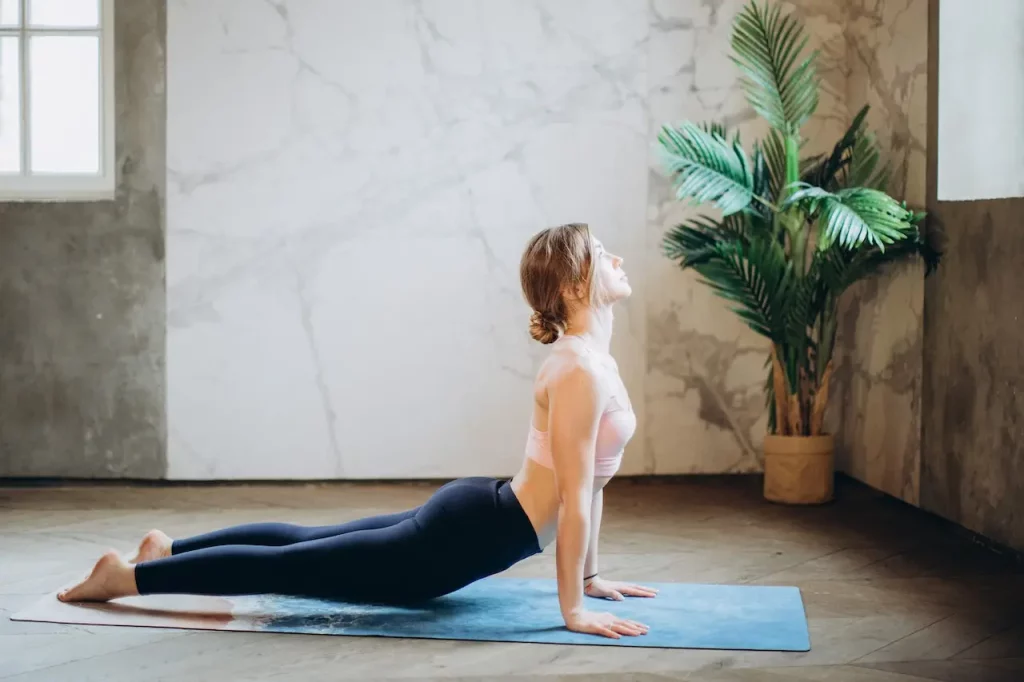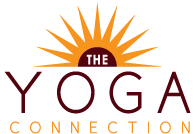Santosha teaches us to let go of what you can't control. The focus is to…
Yoga Therapy: Practicing Yoga for Trauma Release
Practicing yoga for trauma release is a great way to relieve tension and anxiety that your body may be holding onto. Our bodies have a unique way of storing physical manifestations of pain – be it mental or emotional. But certain yoga poses can help you release stored trauma. Let’s discuss how to practice yoga therapy to alleviate trauma.

What Types of Trauma Can Yoga Help Release?
Yoga for trauma release can help to loosen up parts of the body that may have been injured as well as those parts that are tense. Research shows that when we experience or witness trauma, our body activates a fight, flight, and/or freeze response.
Many times we clench certain parts of our body when we are stressed or experiencing negative energy. This can include the pelvis, diaphragm, hamstrings, shoulders, neck, and more.
Whether your trauma is due to a physical injury or a result of experiencing something distressing, different yoga positions can help you to better tolerate or reduce pain and tension. Because the body stores and holds unexpressed emotions, over time, this can lead to physical tightness, stress, and tension. Yoga is also known to help people that suffer from sciatica.
Yoga for Trauma Release: 4 Poses to Try
If you’re looking to try yoga for trauma release, several poses can target specific body parts. Let’s take a look at some you may want to try for relaxation.
Bound Angle Pose (Baddha Konasana)
This is the perfect movement for opening the hips and thigh region. When you’re experiencing tightness in the pelvic area, the Bound Angle pose can give you a great release for these muscles and joints.
How to do the Bound Angle Pose:
- Start by sitting upright on your yoga mat.
- Bend your knees and bring the bottom of your feet together.
- Tuck your heels close to your pubic bone. You should already feel a light stretch in your inner legs.
- Place your fingertips on the floor next to your hips and lengthen your spine.
- Let the tops of your thighs relax towards the floor and let the sides of your feet that are facing up, slightly open towards the ceiling.
- Finally, with your abdominal muscles tight and your spine straight, lean forward slowly.
- Walk your hands in front of you to support the weight of your upper body.
Upward Facing Dog
Upward Facing Dog is a great pose to clear negative energy by opening up and stretching the chest region. This pose can help to flush out any blockages that trauma may have caused.
How to do the Upward Facing Dog Pose:
- Start by laying face-down on your yoga mat.
- Place your hands flat on your yoga mat under your shoulders.
- Press your palms flat and press your arms away from the floor to raise your abdomen up towards the ceiling.
- Squeeze your legs to lift them away from the mat.
- Tilt your chin up towards the ceiling and stretch your chest to an open position.
- From here you can either hold the pose or shift to Downward Facing Dog.
Pyramid Pose
Some people hold grief in their hamstrings or groin area which can lead to tightness in that area. Pyramid Pose releases the hamstrings and contracts the quadriceps which helps the body get rid of tension.
How to do the Pyramid Pose:
- Start in a standing position on your yoga mat.
- Step your left foot back – about 2 feet away from your right leg.
- Straighten both legs and turn the back foot out slightly while keeping the front foot facing forward.
- Reach both arms up straight towards the ceiling.
- Hinge your body at the hip by leaning forward with a straight spine.
- Lean down with a flat back and stop at a 90-degree angle. If you wish to go further, do so slowly.
- For a deeper stretch, place two yoga blocks in front of you on either side of your body and place your hands onto the yoga blocks.
Standing Forward Fold
When people experience physical and emotional trauma, anxiety and depression are common symptoms. In the standing forward fold pose, your heart is raised higher up from the ground than your head. This helps people to relax and bring calm after a trauma.
How to do the Standing Forward Fold Pose:
- Start by standing on your yoga mat with your feet planted firmly on the ground.
- Inhale and sweep the arms up overhead.
- Hinge from the hips and bend forward, pressing your hips out behind you as you let your arms fall to a 90-degree angle on either side of your body.
- Continue bending at the hips as far down as you can go.
- If possible, place your fingertips in line with your toes and hold this position.
Practicing Yoga at The Yoga Connection
Whether you are looking to practice yoga to help with back pain, yoga therapy to recover from COVID, or simply to enhance your mobility, The Yoga Connection offers a variety of yoga classes to help you reach a new level of relaxation and calm.
We offer yoga therapy and yoga classes in Smithfield, North Carolina for people at a variety of levels. Whether you’re a beginner or have practiced before, we have a class for you. Note that our yoga therapy classes are private sessions that are tailored to your individual needs.
Call us today at 919-971-1431 or reach out to us online to learn more about the classes we offer.
You May Also Like...
- Practicing Santosha On and Off The Yoga Mat
- Online Yoga Classes Vs Studio Classes
Want to explore yoga, but aren't sure if yoga videos on YouTube or signing up…
- Choosing your Yoga Studio
It can be confusing. You have never taken a yoga class and want to begin.…
